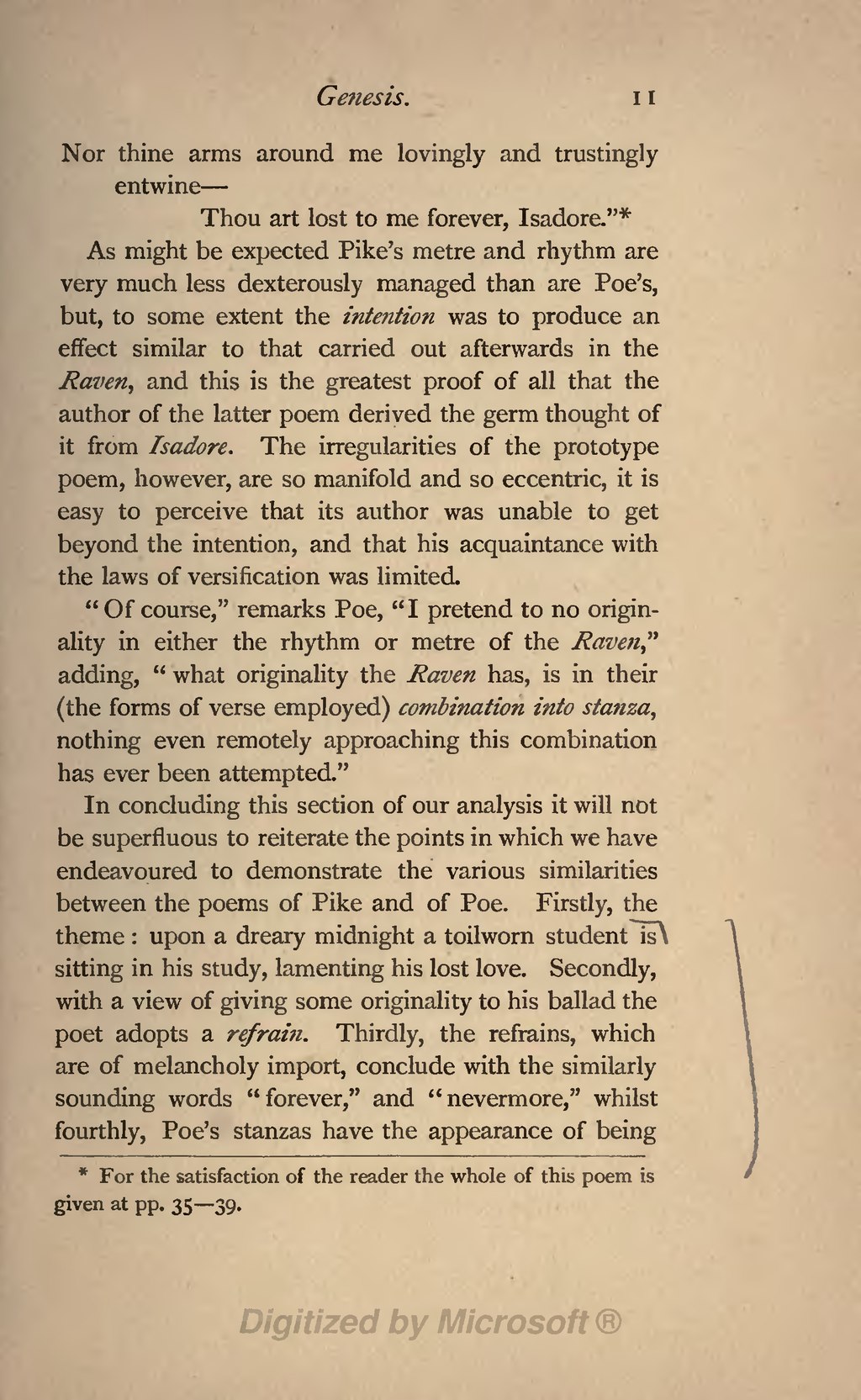|
Nor thine arms around me lovingly and trustingly entwine— |
As might be expected Pike's metre and rhythm are very much less dexterously managed than are Poe's, but, to some extent the intention was to produce an effect similar to that carried out afterwards in the Raven, and this is the greatest proof of all that the author of the latter poem derived the germ thought of it from Isadore. The irregularities of the prototype poem, however, are so manifold and so eccentric, it is easy to perceive that its author was unable to get beyond the intention, and that his acquaintance with the laws of versification was limited.
"Of course," remarks Poe, "I pretend to no originality in either the rhythm or metre of the Raven" adding, "what originality the Raven has, is in their (the forms of verse employed) combination into stanza, nothing even remotely approaching this combination has ever been attempted."
In concluding this section of our analysis it will not be superfluous to reiterate the points in which we have endeavoured to demonstrate the various similarities between the poems of Pike and of Poe. Firstly, the theme: upon a dreary midnight a toilworn student is sitting in his study, lamenting his lost love. Secondly, with a view of giving some originality to his ballad the poet adopts a refrain. Thirdly, the refrains, which are of melancholy import, conclude with the similarly sounding words "forever," and "nevermore," whilst fourthly, Poe's stanzas have the appearance of being
- ↑ For the satisfaction of the reader the whole of this poem is given at pp. 35—39.
